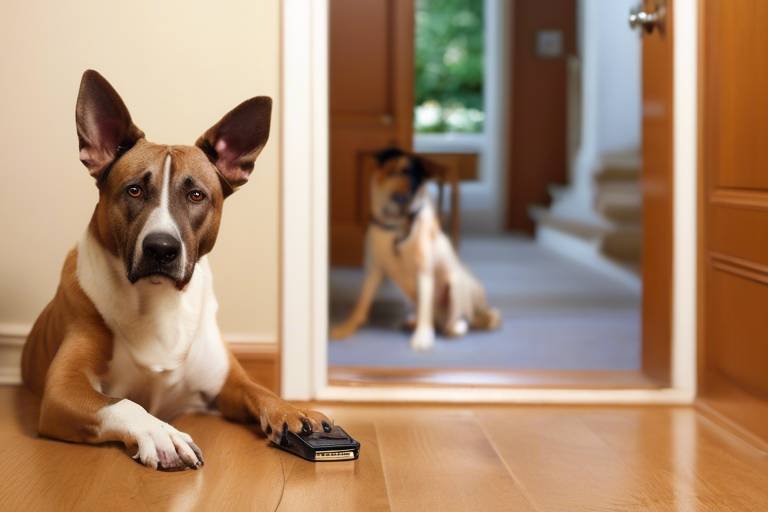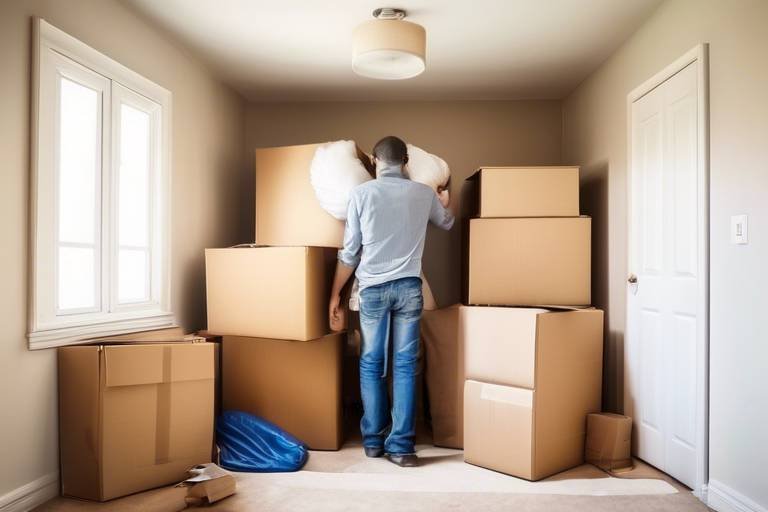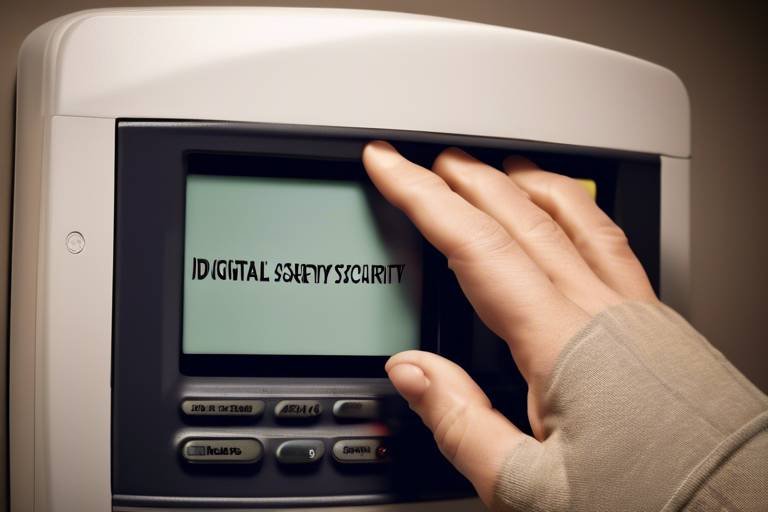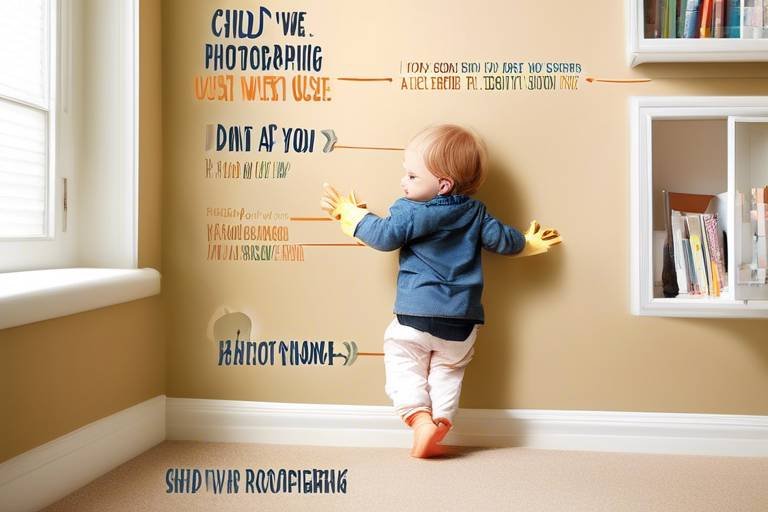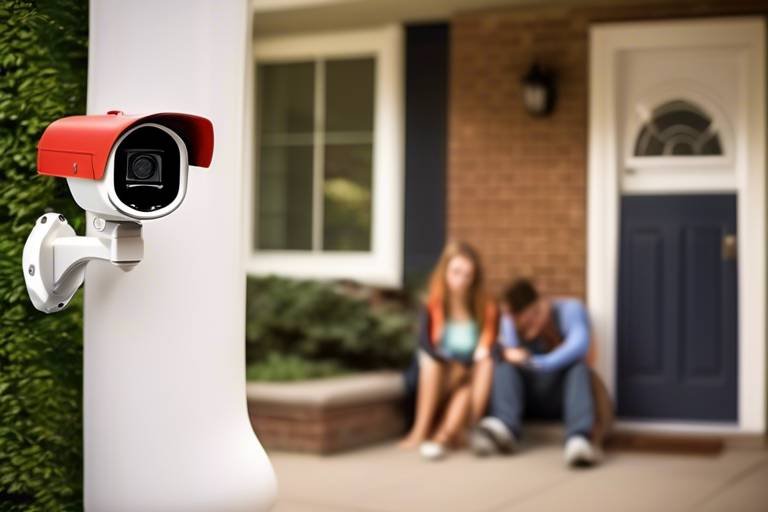Is Your Home Prepared for a Natural Disaster
In today’s unpredictable world, the question isn't just if a natural disaster will occur, but when it will strike. From the roaring winds of hurricanes to the sudden tremors of earthquakes, these events can disrupt lives in an instant. So, how prepared is your home for such unforeseen circumstances? It’s crucial to think about your safety and the safety of your loved ones. Being prepared isn't just about having supplies; it’s about having a comprehensive plan in place that addresses every possible scenario. In this article, we’ll explore the essential steps and considerations you need to take to ensure your home is ready for a natural disaster. Let’s dive deep into the heart of preparedness!
Natural disasters come in various forms, and understanding their characteristics is the first step toward effective preparedness. Earthquakes can strike without warning, leaving little time to react. Floods can rise rapidly, engulfing homes and infrastructure. Hurricanes, on the other hand, may give a bit of advance notice, but their destructive power can still be overwhelming. Each of these disasters has its own unique risks and challenges. By familiarizing yourself with the types of natural disasters that are common in your area, you can better assess your risks and prepare accordingly. For example, if you live in a flood-prone area, you might want to consider elevating your home or investing in flood insurance. The key is to stay informed and proactive.
An emergency plan is your family's lifeline when disaster strikes. It’s not just a document; it’s a blueprint for survival. Your plan should include critical components such as communication strategies, evacuation routes, and designated meeting points. Imagine a scenario where you and your family are separated during a disaster. How would you reconnect? By establishing a clear communication network, you can ensure that everyone knows how to reach each other. This could involve choosing an out-of-town contact person and ensuring that everyone has their phone numbers saved. Additionally, identifying multiple evacuation routes can be a game-changer. You never know which roads might be blocked during a disaster, so having alternatives is essential.
Knowing safe locations within your home and community can save lives during a disaster. Think of your home as a fortress, and within it, there are safe zones. These are areas that are structurally sound and away from windows or heavy furniture that could fall. In your community, familiarize yourself with local shelters and emergency services. This knowledge can be invaluable in times of crisis. If you have kids, make it a fun family activity to explore these safe spots together. Not only does it provide peace of mind, but it also empowers everyone to act quickly if the need arises.
Establishing a robust communication network is vital for keeping your family connected during emergencies. In today’s digital age, there are numerous tools at your disposal. Consider using group messaging apps, social media, or even good old-fashioned landlines. The key is to ensure that everyone knows how to use these tools. Create a family contact card that includes important numbers and addresses. Distribute these cards to family members and keep them in easy-to-reach locations. In the chaos of a disaster, having a plan for communication can significantly reduce stress and confusion.
Regularly practicing emergency drills is akin to rehearsing for a play; it prepares everyone for their role when the curtain rises. Set aside time to conduct fire drills, earthquake drills, or whatever is relevant to your area. Make it engaging for the kids by turning it into a game. The more familiar everyone is with the plan, the more confident they’ll feel when disaster strikes. Remember, the goal is not just to memorize steps but to create muscle memory. When the real situation arises, you want your family to instinctively know what to do.
Having the right supplies on hand can make a significant difference during a disaster. Your emergency kit should be a treasure trove of essentials, including food, water, first-aid supplies, and tools. Here’s a quick rundown of items to include in your emergency kit:
- Water: At least one gallon per person per day for three days.
- Non-perishable food: Enough for three days.
- First-aid kit: Include necessary medications.
- Flashlight and batteries: Power outages are common during disasters.
- Multi-tool or knife: Handy for various tasks.
Make sure to regularly check and update your emergency kit. Expired food and medications won’t do you any good when the time comes!
Conducting a safety assessment of your home can identify vulnerabilities that may need addressing. Walk through your home and look for potential hazards, such as loose railings, heavy furniture that could tip over, or windows that may shatter easily. Consider the structural integrity of your home. If you live in an area prone to earthquakes, reinforcing your foundation can be a wise investment. Don’t forget to check your roof and gutters to ensure they can withstand heavy winds and rain.
Securing your property against potential disasters is vital for minimizing damage and ensuring safety. This could involve making structural improvements, such as reinforcing doors and windows, or landscaping strategies that reduce fire risk. For example, maintaining a defensible space around your home by trimming trees and removing dead vegetation can significantly lower your fire risk. Think of your home as your sanctuary; protecting it should be a top priority.
Understanding your insurance coverage is essential for disaster preparedness. Not all policies are created equal, and some may not cover specific types of disasters. It’s crucial to review your policy and ensure you have adequate coverage for potential risks in your area. Talk to your insurance agent about what to look for, and don’t hesitate to ask questions. Consider additional coverage options like flood or earthquake insurance if you live in high-risk areas. Remember, having the right insurance can be your safety net when disaster strikes.
- What should I include in my emergency kit?
Your emergency kit should include water, non-perishable food, a first-aid kit, flashlight, batteries, and a multi-tool.
- How often should I practice emergency drills?
It’s recommended to practice drills at least twice a year to keep everyone familiar with the procedures.
- What types of insurance should I consider?
Consider policies that cover floods, earthquakes, and other local risks, in addition to standard homeowners insurance.
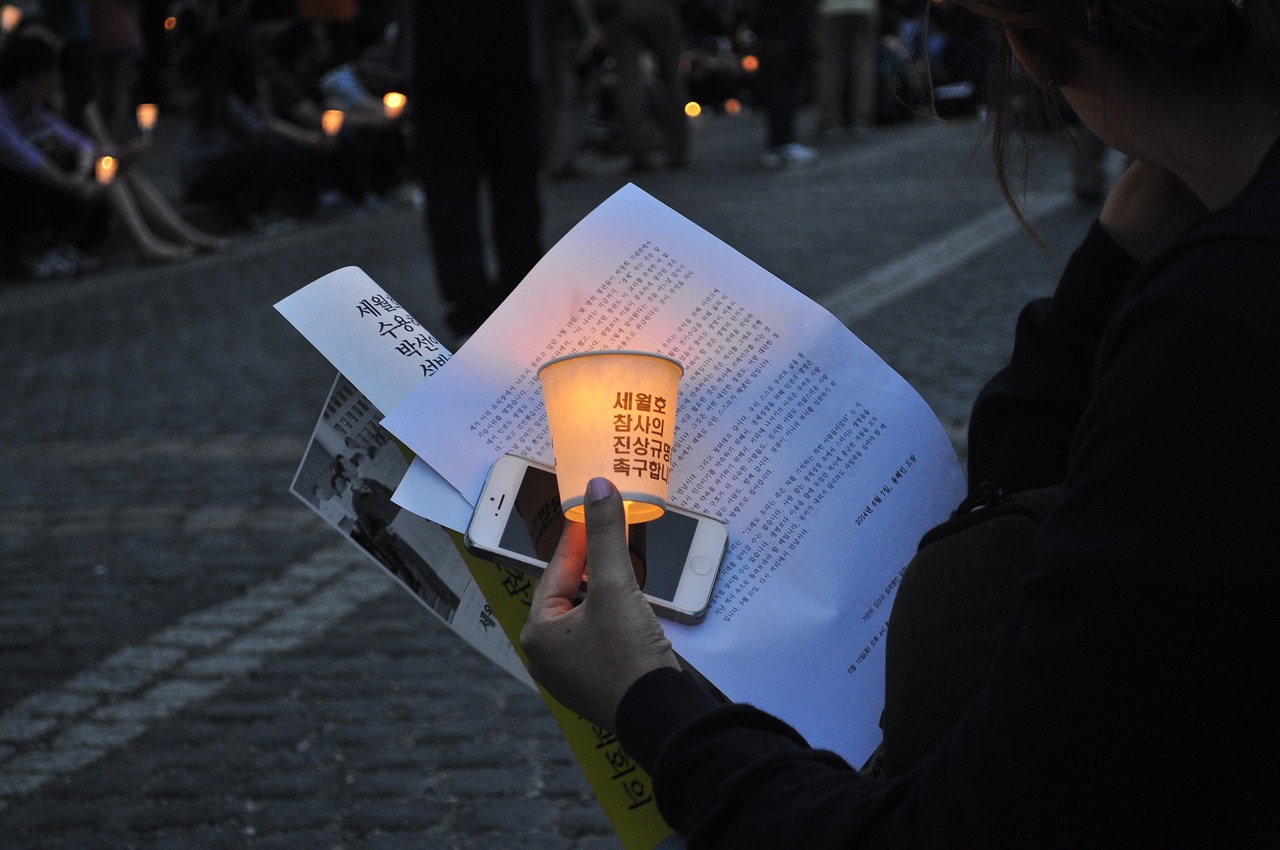
Understanding Natural Disasters
This article explores essential steps and considerations for ensuring your home is ready for natural disasters, emphasizing preparedness, safety measures, and recovery plans.
Natural disasters are unpredictable events that can strike without warning, leaving devastation in their wake. They come in various forms, each with its unique characteristics and potential impacts. From the violent shakes of an earthquake to the torrential downpours of a flood, understanding these phenomena is crucial for homeowners looking to protect their families and property.
For instance, consider hurricanes: these powerful storms can bring not only high winds but also severe flooding. The National Hurricane Center defines a hurricane as a tropical cyclone with maximum sustained winds of 74 mph or higher. On the other hand, earthquakes can strike suddenly, often without any noticeable warning, leading to significant structural damage and personal injury. To effectively prepare for these events, it’s essential to recognize their signs and understand their potential risks.
Below is a table that summarizes some common types of natural disasters, their characteristics, and the regions most affected:
| Type of Disaster | Characteristics | Commonly Affected Regions |
|---|---|---|
| Earthquake | Sudden ground shaking, potential for aftershocks | West Coast, areas near tectonic plates |
| Flood | Heavy rainfall, rising water levels, can occur rapidly | Midwest, coastal areas |
| Hurricane | High winds, heavy rainfall, storm surges | Gulf Coast, Eastern Seaboard |
| Tornado | Rotating columns of air, extremely high winds | Midwest (Tornado Alley) |
Understanding these disasters helps homeowners assess their vulnerabilities. For example, if you live in a flood-prone area, you might consider elevating your home or investing in sump pumps. Similarly, if earthquakes are common in your region, securing heavy furniture and installing flexible gas lines can mitigate risks. Knowing the specific threats in your area allows you to tailor your preparedness strategies effectively.
Moreover, it's not just about recognizing the disasters themselves; it’s also about understanding the aftermath. After a disaster strikes, the recovery process can be long and arduous. Communities often come together to help each other, but having a personal recovery plan can make a significant difference in how quickly you can return to normalcy. This plan should include not only immediate safety measures but also long-term recovery strategies.
In conclusion, being aware of the various types of natural disasters and their potential impacts is the first step toward effective preparedness. It’s crucial to take proactive measures to safeguard your home and loved ones, ensuring that when disaster strikes, you’re not left in the dark. So, ask yourself: Is your home truly ready for the unexpected?
An emergency plan is crucial for every household. This section outlines key components of a comprehensive plan, including communication strategies and evacuation routes.
Knowing safe locations within your home and community can save lives during a disaster. This part discusses identifying safe areas and community resources.
Establishing a communication network ensures family members can connect during emergencies. This section covers tools and strategies for effective communication.
Regularly practicing emergency drills helps ensure everyone knows what to do during a disaster. This part emphasizes the importance of routine practice.
Having the right supplies on hand can make a significant difference during a disaster. This section details essential items to include in your emergency kit.
Conducting a safety assessment of your home can identify vulnerabilities. This section discusses how to evaluate your property and make necessary improvements.
Securing your property against potential disasters is vital. This part covers structural improvements and landscaping tips to enhance safety.
Understanding your insurance coverage is essential for disaster preparedness. This section explains what to look for in policies and how to ensure adequate protection.
- What should I include in my emergency kit? Essential items include water, non-perishable food, first aid supplies, flashlights, and important documents.
- How can I stay informed about natural disasters? Use weather apps, local news, and emergency alert systems to stay updated.
- Is it necessary to have a family communication plan? Absolutely! A communication plan ensures everyone knows how to reach each other during emergencies.

Creating an Emergency Plan
When it comes to natural disasters, having a well-thought-out emergency plan can be the difference between chaos and calm. Imagine facing a hurricane or an earthquake without a clue about what to do next. It’s like sailing a ship without a compass—you're bound to get lost! So, let’s break down the essential components of a robust emergency plan that will keep your family safe.
First and foremost, communication is key. In the whirlwind of a disaster, it's vital that everyone knows how to reach each other. Establish a communication strategy that includes:
- Designating a family member as the primary contact.
- Keeping a list of emergency contacts, including neighbors and local authorities.
- Using text messages or social media for updates, as phone lines may be down.
Next, you’ll want to identify evacuation routes. Knowing the quickest and safest paths out of your neighborhood can save precious time. Take a drive with your family to map out these routes, and don’t forget to account for potential road closures or hazards. It’s like planning a road trip—only this time, you’re escaping a disaster!
Another critical aspect of your emergency plan is identifying safe locations within your home and community. Create a list of safe spots where your family can gather during emergencies, such as:
- Your basement or an interior room for tornadoes.
- Higher ground for floods.
- Designated meeting points outside your home in case of evacuation.
Don’t overlook the importance of building a communication network with your neighbors. In times of crisis, neighbors can be a lifeline. Establish a group chat or a neighborhood watch system to share information and resources. It’s reassuring to know that you’re not alone in facing a disaster; together, you can create a safety net.
Lastly, practicing your emergency plan is crucial. Just like fire drills in school, regular practice helps ensure everyone knows their role and what to do when the time comes. Set aside a day each month to go through your emergency drills. This could include practicing evacuation routes, reviewing communication strategies, and even simulating scenarios. Remember, practice makes perfect, and it can turn panic into preparedness.
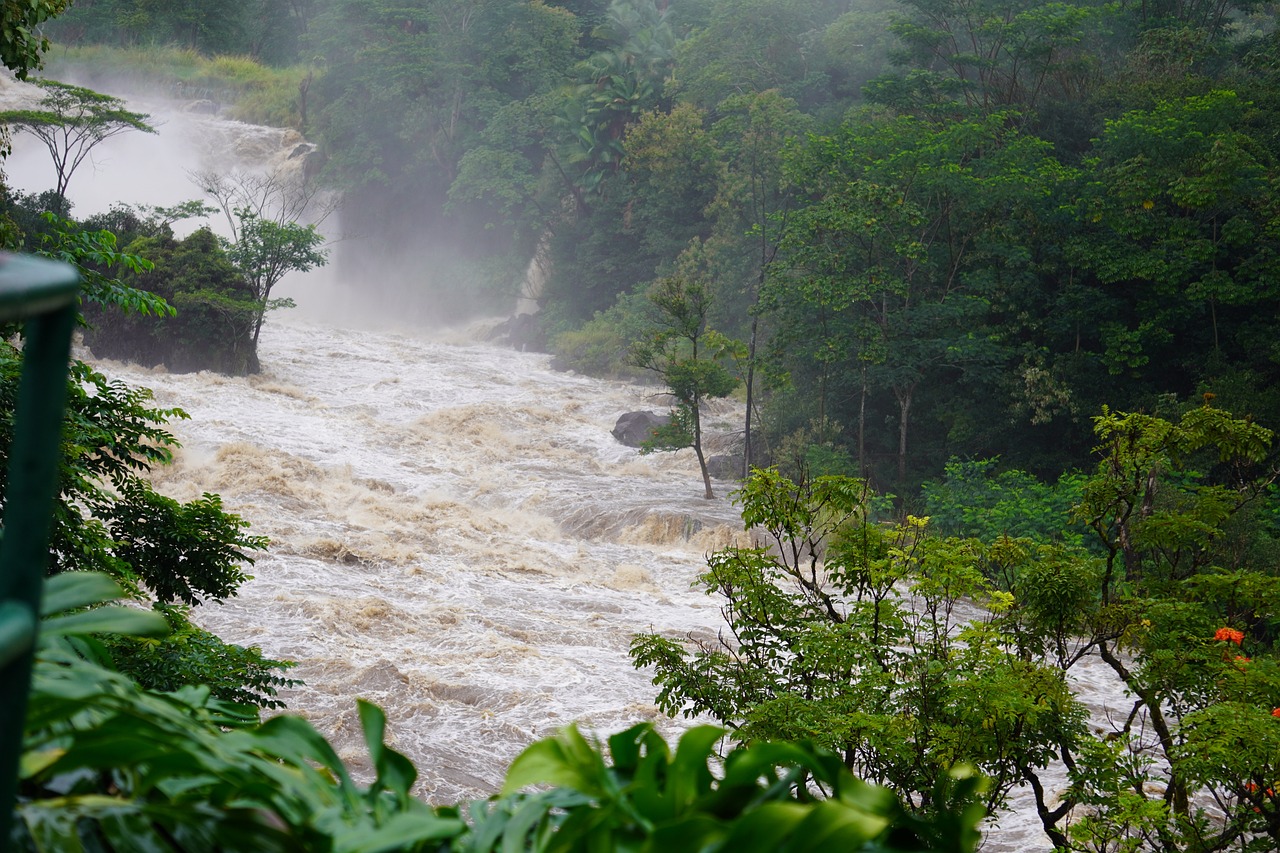
Identifying Safe Locations
When it comes to natural disasters, knowing where to find safety can be the difference between life and death. Imagine your home shaking during an earthquake or the sound of rushing water during a flood; understanding safe locations is crucial. Safe locations are not just about finding shelter; they involve knowing the safest spots within your home and the community around you. Start by identifying safe areas in your home, such as interior rooms away from windows, basements for tornadoes, or higher floors in case of flooding. These locations should be easily accessible and free of hazards.
Moreover, it’s essential to familiarize yourself with community resources such as local shelters, emergency services, and evacuation routes. You might think, “Why do I need to know this?” Well, during a disaster, every second counts, and having a plan can help you respond swiftly. For instance, if a hurricane is approaching, knowing the nearest shelter can save you from panic and confusion.
Additionally, it’s wise to conduct a walkthrough of your neighborhood. Identify landmarks, such as schools or community centers, that can serve as evacuation points. This knowledge not only prepares you but also empowers your family. You can create a simple map highlighting these locations, ensuring everyone knows where to go in an emergency.
Here’s a quick table summarizing key safe locations to consider:
| Type of Disaster | Safe Locations |
|---|---|
| Earthquake | Interior rooms, under sturdy furniture |
| Flood | Higher floors, rooftops |
| Tornado | Basements, storm shelters |
| Hurricane | Local shelters, designated evacuation routes |
In conclusion, identifying safe locations is not just about knowledge; it’s about preparation and peace of mind. By taking the time to understand where to go in a crisis, you can reduce anxiety and increase your chances of staying safe. Remember, safety is a shared responsibility, so discuss these plans with your family and make sure everyone is on the same page.
- What should I do if I can't evacuate during a disaster? Stay indoors, find a safe location, and keep yourself informed through local news or emergency services.
- How can I ensure my family knows the emergency plan? Regularly review the plan and conduct drills to practice what to do in various scenarios.
- Are there apps that can help with emergency preparedness? Yes, there are several apps available that provide alerts, safety tips, and even checklists for emergency supplies.
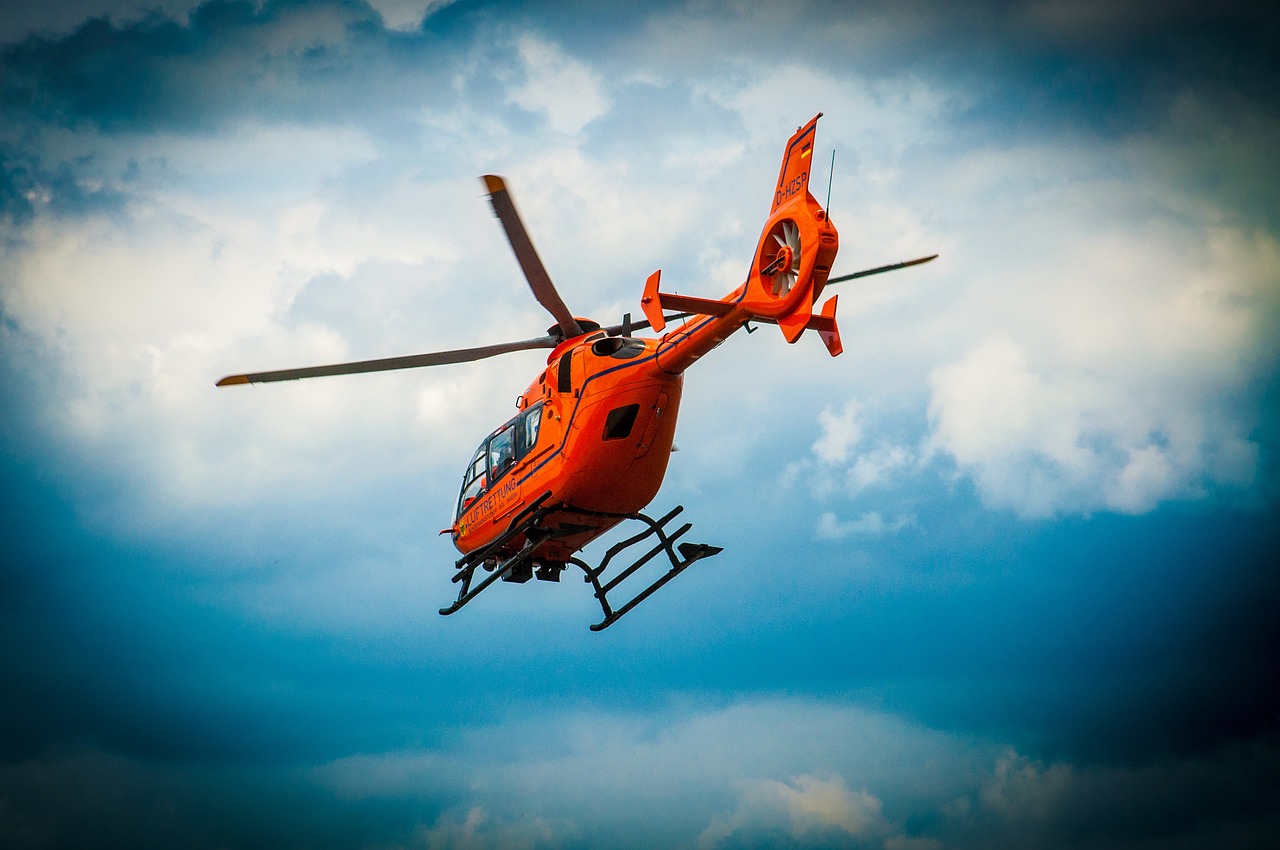
Building a Communication Network
When disaster strikes, the last thing you want is to be scrambling to find your loved ones. That’s why building a robust communication network is not just a good idea—it's essential. Think of your communication network as the lifeline that connects you and your family during emergencies. It’s like having a safety net that ensures you can reach out and touch base, no matter what chaos is unfolding around you.
First things first, establish a communication plan. This plan should outline how family members will communicate during a disaster. Will you use text messages, social media, or a group chat? In many cases, traditional phone lines may be overwhelmed, so having alternative methods can be a game-changer. Don’t forget to include a list of important contacts, such as relatives, friends, and neighbors, who can be reached in case of an emergency. You might even want to create a small card with these contacts for everyone to keep in their wallets or bags.
Next, consider the importance of designated meeting points. In the midst of a disaster, it can be easy to lose track of where everyone is. By choosing a few safe locations where family members can regroup, you can reduce panic and confusion. These locations could be a nearby park, a neighbor's house, or even a local community center. Make sure everyone knows these spots and agrees on which one to head to in case of an emergency.
Additionally, leverage technology to enhance your communication network. There are numerous apps designed for emergency situations that can help you stay connected. For instance, apps like GroupMe or WhatsApp allow you to create group chats that can be invaluable when traditional communication methods fail. You can also use GPS tracking apps to keep tabs on family members during a crisis.
Finally, regular check-ins can keep your communication network strong. Set aside time each month for family discussions about your emergency plans. This not only reinforces the plan but also helps everyone feel more prepared and less anxious. Think of it like tuning up your car; regular maintenance ensures it runs smoothly when you need it the most.
By taking these steps to build a reliable communication network, you’re not just preparing for a disaster; you’re creating a sense of security and confidence among your loved ones. Remember, in the face of adversity, clear communication can make all the difference.
- What should I include in my emergency communication plan? Your plan should include contact information for family members, designated meeting points, and alternative communication methods.
- How often should I practice my communication plan? It's recommended to review and practice your communication plan at least once a month to keep everyone informed and prepared.
- Are there specific apps recommended for emergency communication? Yes, apps like GroupMe, WhatsApp, and various emergency alert apps can help maintain communication during a disaster.
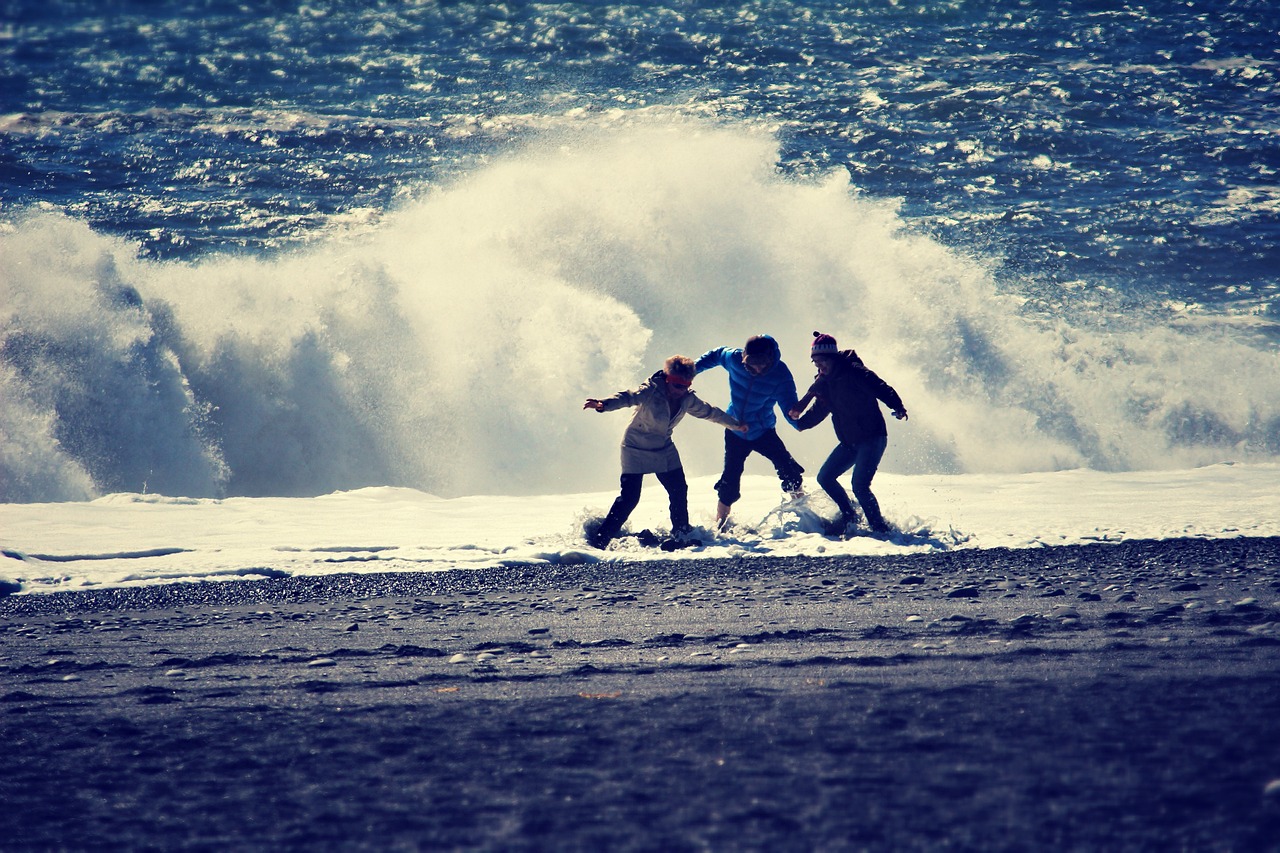
Practicing Drills
When it comes to preparing for a natural disaster, practicing drills is as crucial as having a well-stocked emergency kit. Think of it like training for a marathon; you wouldn’t just show up on race day without having put in the effort and practice, right? Similarly, conducting regular drills ensures that every member of your household knows exactly what to do when the unexpected strikes. These practice sessions can significantly reduce panic and confusion, allowing everyone to respond swiftly and effectively.
So, how do you go about practicing these drills? First, gather your family and discuss the types of disasters that could potentially affect your area. Is it a tornado, earthquake, or perhaps a flood? Once you have a clear understanding of the risks, you can tailor your drills accordingly. For instance, if you live in an area prone to earthquakes, practicing “Drop, Cover, and Hold On” can be invaluable. This simple action can save lives by protecting individuals from falling debris.
Another important aspect of practicing drills is establishing a routine. Just like brushing your teeth every morning, these drills should become a regular part of your family's schedule. Aim to practice at least twice a year, but don’t hesitate to run through the drills more frequently, especially after any changes in your household or if you’ve added new family members. You might even consider turning these drills into a fun family activity! Set up a friendly competition to see who can remember all the steps and execute them the fastest. This not only reinforces the importance of being prepared but also strengthens family bonds.
During your drills, it’s essential to simulate real-life scenarios as closely as possible. For example, if you’re practicing an evacuation, turn off the lights, and use a flashlight to navigate your home. This will help everyone become accustomed to moving in low visibility, which is often the case during emergencies. Additionally, consider incorporating various scenarios into your drills, such as what to do if family members are separated or if pets need to be evacuated. The more comprehensive your practice, the better prepared you will be.
Lastly, don’t forget to evaluate your drills after each session. Gather your family and discuss what went well and what could be improved. This reflection is key to enhancing your preparedness. You might even want to keep a log of your practice sessions, noting any changes or improvements that need to be made. Remember, preparedness is an ongoing process, and your drills should evolve as your family grows and changes.
In conclusion, practicing drills is not just a box to check off on your preparedness list; it’s an essential part of ensuring your family’s safety during a natural disaster. By making these drills a regular part of your routine, you’ll build confidence and ensure that everyone knows how to respond when it matters most. So, gather your family, start practicing, and take a proactive step toward safety!
- How often should we practice emergency drills? It's recommended to practice at least twice a year, but more frequent drills can be beneficial, especially after changes in your household.
- What types of scenarios should we include in our drills? Include a variety of scenarios such as earthquakes, floods, and fire evacuations to ensure comprehensive preparedness.
- Can we make drills fun for kids? Absolutely! Incorporate games or competitions to make the practice engaging and enjoyable for all family members.

Gathering Emergency Supplies
When it comes to preparing for a natural disaster, having the right emergency supplies can be a game changer. Think of it like packing for a road trip; you wouldn't hit the highway without snacks, a map, and a spare tire, right? Similarly, being prepared with essential items can make all the difference when the unexpected strikes. So, what exactly should you include in your emergency kit to ensure you're ready for anything? Let's break it down.
First, you want to focus on the basics. Your emergency kit should include food and water that can sustain your family for at least three days. Non-perishable food items like canned goods, granola bars, and dried fruits are excellent choices. And don’t forget about water! Ideally, you should have at least one gallon per person per day. If you have pets, make sure to include food and water for them as well.
Next, consider adding first aid supplies. Accidents can happen, and having a well-stocked first aid kit can help you address minor injuries on the spot. Your kit should include items such as band-aids, antiseptic wipes, gauze, and any necessary prescription medications. It’s also wise to include personal hygiene products like hand sanitizer and toilet paper, as these can be hard to come by during emergencies.
Now, let’s talk about safety. Flashlights and batteries are crucial for navigating in the dark, especially if the power goes out. You might also want to consider a multi-tool or a Swiss Army knife—these handy gadgets can serve multiple purposes and save you a lot of hassle. And don’t forget a whistle! It’s a simple but effective tool for signaling for help if you find yourself in trouble.
To help you visualize your emergency kit, here’s a quick table summarizing the essential items:
| Item | Quantity | Notes |
|---|---|---|
| Water | 1 gallon per person per day (3 days) | Include for pets if applicable |
| Non-perishable food | 3-day supply | Canned goods, granola bars, etc. |
| First aid kit | 1 kit | Include personal medications |
| Flashlight | 1 per person | Don’t forget extra batteries! |
| Multi-tool | 1 | Useful for various tasks |
| Whistle | 1 | For signaling help |
Finally, it’s important to remember that your emergency kit should be tailored to your specific needs. For example, if you have infants, you’ll need to include baby formula and diapers. If someone in your household has allergies, be sure to have their medications on hand. And don’t forget about important documents—keeping copies of insurance policies, identification, and medical records in a waterproof bag can save you a lot of stress in the aftermath of a disaster.
In conclusion, gathering emergency supplies is not just a task; it’s an investment in your safety and peace of mind. By taking the time to prepare now, you can face the future with confidence, knowing that you and your loved ones are equipped to handle whatever comes your way. So, take a moment today to assess your supplies and make any necessary additions. Your future self will thank you!
Q: How often should I check my emergency supplies?
A: It’s a good idea to check your emergency supplies every six months. This way, you can replace any expired food or medications and ensure everything is in working order.
Q: What should I do if I have special medical needs?
A: If you or someone in your household has special medical needs, be sure to include those specific medications and supplies in your emergency kit. Discuss your needs with your healthcare provider to ensure you have everything necessary.
Q: Where should I store my emergency kit?
A: Store your emergency kit in a cool, dry place that is easily accessible. Make sure all family members know where it is located and can reach it quickly in case of an emergency.

Home Safety Assessments
When it comes to ensuring your home is prepared for a natural disaster, one of the most crucial steps is conducting a home safety assessment. This process involves a thorough evaluation of your property to identify vulnerabilities that could be exploited during a disaster. Think of it as a routine check-up for your home—just like you would visit a doctor to assess your health, your home deserves the same attention. By pinpointing weaknesses, you can take proactive measures to fortify your living space and safeguard your loved ones.
Start by examining the structural integrity of your home. Look for any signs of damage, such as cracks in the foundation, loose shingles, or weak walls. These issues can become more pronounced during natural disasters like earthquakes or strong winds. A great way to visualize this is to consider your home as a fortress. If the walls are crumbling, how can you expect it to withstand an onslaught? It’s essential to fix any structural flaws before disaster strikes.
Next, pay attention to your surroundings. The landscape around your home can significantly impact its safety. For instance, large trees or branches that are too close to your house can pose a risk during high winds or storms. You wouldn’t want a tree crashing into your living room during a hurricane, would you? Regularly trim back branches and consider removing any trees that could become hazardous. Additionally, ensure that your gutters are clear and that your drainage system is functioning properly to prevent flooding.
It’s also wise to take a look at your home’s emergency exits. In the event of a disaster, you want to ensure that everyone knows how to get out safely. This means checking that doors and windows open easily and are not obstructed by furniture or debris. You might even want to create a map of your home that highlights all possible exits. This map can serve as a handy reference during practice drills.
Furthermore, consider the safety of your utilities. Gas lines, electrical systems, and water supplies should be inspected regularly. For example, if you live in an area prone to earthquakes, securing your water heater and gas appliances can prevent them from tipping over and causing leaks or fires. It’s like strapping down a heavy object during a bumpy ride; you want to keep everything in place to avoid chaos.
In addition to these assessments, it’s beneficial to create a checklist of items to evaluate. Here’s a simple table to help you get started:
| Assessment Area | What to Check | Recommended Actions |
|---|---|---|
| Structural Integrity | Cracks, loose shingles | Repair damages, reinforce weak areas |
| Landscaping | Proximity of trees and shrubs | Trim branches, remove hazardous trees |
| Emergency Exits | Accessibility of doors and windows | Clear obstructions, map exits |
| Utilities | Gas lines, electrical systems | Secure appliances, inspect systems |
Finally, don’t forget to involve your family in the assessment process. This not only spreads awareness but also helps everyone understand the importance of safety. After all, safety is a team effort, and when the whole family is on board, you create a stronger, more prepared household. By taking these steps, you’ll transform your home into a safe haven, ready to face whatever nature throws your way.
- How often should I conduct a home safety assessment?
It’s advisable to conduct a home safety assessment at least once a year, or after any significant weather events. - What should I do if I find vulnerabilities?
Address them immediately, whether that means repairing structural issues or clearing hazardous landscaping. - Can I do the assessment myself?
Yes, many aspects of the assessment can be done by homeowners, but consider hiring professionals for structural and utility inspections.

Securing Your Property
When it comes to against natural disasters, the stakes couldn't be higher. Imagine your home as a fortress, standing strong against the unpredictable forces of nature. Just as a knight prepares for battle, you too must take proactive steps to safeguard your haven. This means not only reinforcing the structure of your home but also considering the environment that surrounds it. The first step is to conduct a thorough assessment of your property to identify any vulnerabilities that could be exploited during a disaster.
Start by examining the foundation and structure of your home. Are there any cracks in the walls or signs of wear and tear? Addressing these issues early can prevent more significant damage later on. For instance, if you live in an area prone to earthquakes, retrofitting your home to withstand seismic activity is crucial. This might involve bolting your house to its foundation or installing steel braces for added support. While these improvements require an upfront investment, they can save you a fortune in repairs and provide peace of mind.
Next, let’s talk about your yard. Landscaping plays a critical role in disaster preparedness. Overgrown trees and shrubs can become hazardous projectiles during high winds, while poorly placed flower beds can lead to flooding. Consider the following tips to enhance your landscape's resilience:
- Trim Trees: Regularly prune trees to remove dead branches that could fall during storms.
- Plant Wisely: Choose native plants that are more resilient to local weather conditions.
- Install Drainage Systems: Ensure proper drainage to prevent flooding during heavy rains.
Moreover, securing your property isn't just about physical structures; it also involves being prepared for the aftermath. This includes having a plan for temporary shelter in case your home becomes uninhabitable. Whether it's a friend’s house, a community center, or a designated emergency shelter, knowing where to go can be a lifesaver. Additionally, consider investing in a home security system that includes surveillance cameras and alarms. Not only do these systems deter theft, but they can also provide valuable information during a disaster, like monitoring water levels during floods.
Lastly, don't forget about your insurance coverage. Review your policy to ensure it includes protection against natural disasters relevant to your area. This could mean adjusting your coverage limits or adding specific riders for floods or earthquakes. Understanding your insurance will help you feel more secure, knowing you’re financially protected in case the worst happens.
By taking the time to secure your property, you are not just protecting your investment; you are ensuring the safety of your loved ones and creating a resilient home ready to face whatever nature throws its way. Remember, preparedness is not just a one-time task but an ongoing commitment to safety and security.
Q: What are the first steps I should take to secure my property?
A: Start with a thorough assessment of your home’s structure and landscape. Look for vulnerabilities and address them promptly, such as repairing cracks and trimming overgrown trees.
Q: How can I make my home more resistant to earthquakes?
A: Consider retrofitting your home by bolting it to the foundation and installing steel braces. These structural improvements can significantly enhance your home's earthquake resilience.
Q: Is landscaping important for disaster preparedness?
A: Absolutely! Proper landscaping can prevent flooding and reduce the risk of hazardous projectiles during storms. Planting native, resilient plants and ensuring proper drainage are key steps.
Q: What should I include in my emergency plan?
A: Your emergency plan should outline evacuation routes, communication strategies, and designated safe locations. Make sure everyone in your household is familiar with the plan.
Q: How often should I review my insurance policy?
A: It’s wise to review your insurance policy annually or whenever you make significant changes to your property. This ensures you have adequate coverage for potential disasters.
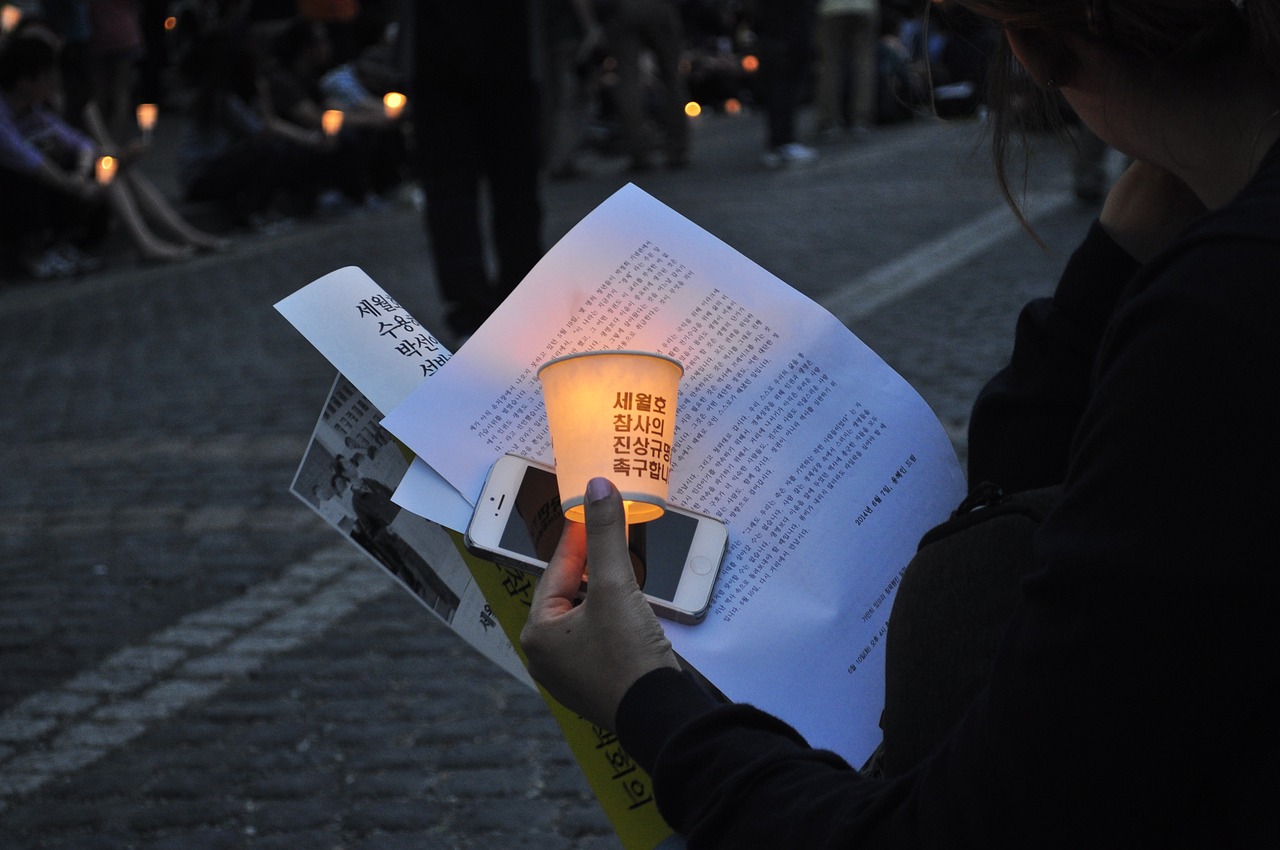
Insurance Considerations
When it comes to disaster preparedness, one of the most critical yet often overlooked aspects is understanding your insurance coverage. Just like a sturdy umbrella on a rainy day, having the right insurance can shield you from the financial storms that accompany natural disasters. But what should you really be looking for in your insurance policies?
First and foremost, it's essential to know what types of disasters are covered under your current policy. For instance, standard homeowners insurance often covers fire, theft, and vandalism, but many policies exclude specific natural disasters like floods or earthquakes. If you live in an area prone to such events, you may need to purchase additional coverage. Here’s a quick breakdown:
| Type of Coverage | Commonly Covered? | Notes |
|---|---|---|
| Earthquake | No | Requires separate policy or endorsement |
| Flood | No | National Flood Insurance Program (NFIP) available |
| Hurricane | Yes (with limitations) | Check for windstorm deductibles |
| Fire | Yes | Typically included in standard policies |
Next, it’s crucial to assess the replacement cost of your home and belongings. Many homeowners mistakenly believe that their insurance will cover the market value of their property. However, in the event of a disaster, you need to ensure that your policy covers the full cost to rebuild or replace your home and possessions. This means regularly updating your inventory and understanding how much it would cost to replace items like furniture, electronics, and appliances.
Another vital consideration is the differential deductibles. Some policies may implement higher deductibles for natural disasters, especially in high-risk areas. This means that during a disaster, you may have to pay a more significant amount out of pocket before your insurance kicks in. Make sure to read the fine print and understand how these deductibles work.
Furthermore, don't forget about liability coverage. In the aftermath of a disaster, if someone is injured on your property, you could be held liable. Ensuring that your policy includes adequate liability coverage can protect you from potential lawsuits that could arise during such stressful times.
Finally, it’s a good idea to regularly review your insurance policies, especially after significant life changes, such as renovations, new purchases, or changes in your family structure. A simple phone call to your insurance agent can help you ensure that your coverage remains adequate and up-to-date.
In summary, understanding your insurance considerations is a fundamental part of disaster preparedness. It’s not just about having a policy; it’s about having the right policy that aligns with your needs and the risks you face. So, take the time to review your coverage, ask questions, and make informed decisions. After all, when disaster strikes, the last thing you want to worry about is whether you’re adequately protected.
- What types of natural disasters should I prepare for?
It's essential to consider the specific risks in your area, such as hurricanes, earthquakes, floods, or wildfires. - How often should I review my insurance policy?
Regular reviews are recommended, especially after significant life changes or when you make major purchases. - What is the difference between replacement cost and actual cash value?
Replacement cost covers the cost to replace your items at current prices, while actual cash value deducts depreciation from the replacement cost.
Frequently Asked Questions
- What types of natural disasters should I prepare for?
When it comes to natural disasters, it's essential to consider various types that can affect your area. Common disasters include earthquakes, floods, hurricanes, tornadoes, and wildfires. Each of these events has unique characteristics and risks, so understanding them can help you tailor your preparedness efforts accordingly.
- How do I create an effective emergency plan for my family?
Creating an effective emergency plan involves several key steps. Start by discussing with your family what to do in case of a disaster. Identify safe locations in your home and community, establish communication methods, and outline evacuation routes. Regularly practicing drills can ensure everyone knows their role, making your plan more effective when it matters most.
- What should I include in my emergency supplies kit?
Your emergency supplies kit should contain essential items that can sustain you and your family for at least 72 hours. Key items to include are water (one gallon per person per day), non-perishable food, a flashlight, batteries, a first-aid kit, and important documents. Don't forget personal items like medications and a multi-tool, which can be invaluable during emergencies.
- How can I assess the safety of my home against natural disasters?
Conducting a home safety assessment involves evaluating your property for vulnerabilities. Check for loose roof shingles, unsecured windows, and potential flooding areas. Consider consulting with a professional who can provide insights into structural improvements and landscaping tips to enhance your home's safety against specific natural disasters.
- What insurance coverage should I have for disaster preparedness?
Understanding your insurance coverage is crucial for disaster preparedness. Ensure you have adequate coverage for your home and personal belongings, including flood and earthquake insurance if necessary. Review your policy regularly and consult with your insurance agent to clarify any doubts and make adjustments based on your preparedness needs.






